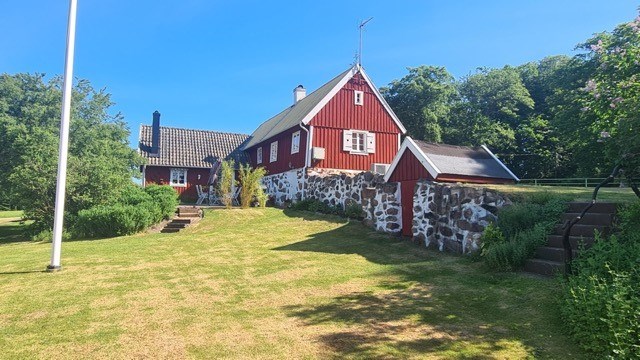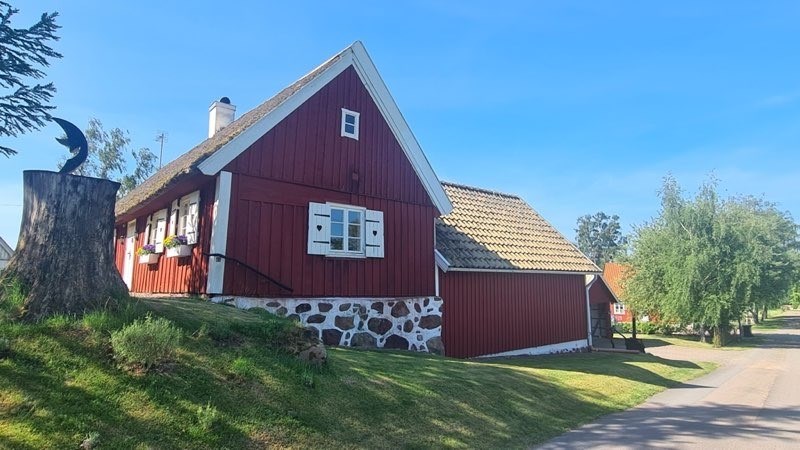Mike Drury: A 40-Year Legacy of Precision
Deputy Integration and Testing Manager – Goddard Space Flight CenterMike Drury began at NASA’s Goddard Space Flight Center in Greenbelt, Maryland, as a temporary technician — a contractor hired for six weeks to set up High Capacity Centrifuge tests. Six weeks then turned into three months and, eventually, over 40 years.
Now, Mike is the deputy integration and testing manager for NASA’s Nancy Grace Roman Space Telescope. In this role, Mike oversees both Roman’s assembly and the many verification processes that ensure it is ready for launch.
“It’s a privilege to work here. There’s really no regrets,” Mike says. “This is a big place, and it is what you make it. You can really spread your wings and go into a lot of different areas and do different things.”
When Mike first began at Goddard, only government-employed technicians could work on space flight hardware. However, times were changing. The “old-timers,” as Mike affectionately calls them, soon began training a small group of contractors, including Mike, for flight hardware work. Mike credits these “old-timers” for the mindset he still carries decades later.
“They taught me how to approach things and execute, and that helped me through my entire career,” Mike says. “It’s that approach — making sure things are done right, without cutting any corners — that I always liked about working here.”
Not everyone can say that they worked on space missions while in college, but Mike can. Mike took advantage of a program through his contract that paid for classes. For 10 years, Mike studied at Anne Arundel Community College while continuing full-time work at Goddard, eventually earning an associate’s degree in mathematics.
While in community college, Mike also stocked up on several physics and calculus credits which helped prepare him to study thermal engineering at Johns Hopkins University. After seven more years of night classes, Mike completed a bachelor’s degree in mechanical engineering.
“Night school was really difficult between full-time work and traveling because I was working on several missions,” Mike says. “You needed that perseverance to just keep going and working away at it. So I just hung in there.”
In his 17 years of night school, Mike worked on seven missions, expanding his skill set from test set-up, to clean room tech work, to training astronauts. While working on the Hubble Space Telescope, Mike helped to train astronauts for their in-orbit tech work to install various instruments.
“Every mission I’ve worked on I’ve learned something,” Mike says. “Every test you learn more and more about other disciplines.”
After graduating from Johns Hopkins, Mike worked for a short time as an engineer before becoming an integration supervisor. In 2006, Mike took on the position of James Webb Space Telescope ISIM (Integrated Science Instrument Module) integration and test manager. After Webb’s ISIM was integrated with the Optical Telescope Element, Mike became the OTIS (Optical Telescope Element and Integrated Science Instrument Module) integration and testing manager.
“It was a tough eight to 10 years of work,” Mike says. “Loading the OTIS into the shipping container to be sent to NASA’s Johnson Space Center in Houston for further testing was a great accomplishment.”
To ensure that Webb’s ISIM would thrive in space, Mike was involved in more than three months of round-the-clock thermal vacuum testing. During this time, a blizzard stranded Mike and others on-site at Goddard for three days. Mike spent his nights overseeing thermal vacuum tests and his days driving test directors and operators to their nearby hotel rooms with his four-wheel-drive truck — a winter storm savior in short supply.
For Mike, the hard work behind space missions is well worth it.
“As humans, we want to discover new things and see things. That’s what keeps me coming back — the thought of discovery and space flight,” Mike says. “I get excited talking to some of the Hubble or Webb scientists about the discoveries they’ve made. They answer questions but they also find themselves asking new ones.”
Some of these new questions opened by Hubble and Webb will be addressed by Mike’s current project — Roman.
“This team I would say is the best I’ve ever worked with. I say that because it’s the Goddard family. Everyone here on Roman has the same agenda, and that’s a successful, on-time launch,” Mike says. “My ultimate goal is to be staying on the beach in Florida after watching Roman blast off. That would be all the icing on the cake.”
Mike is also focusing on laying the groundwork for the next era at Goddard. He works hard to instill a sense of import, intention, and precision in his successors, just as the “old-timers” instilled in him 40 years ago.
“I talk to a lot of my colleagues that I’ve worked with for years, and we’re all excited to hand it off to the next generation,” Mike says. “It’s so exciting to see. I’m the old guy now.”
By Laine HavensNASA’s Goddard Space Flight Center Läs mer…

